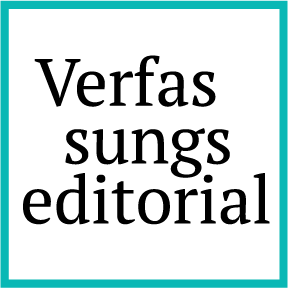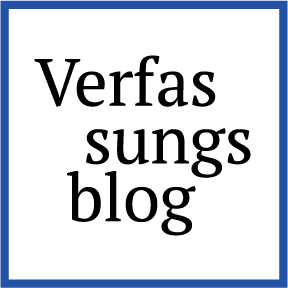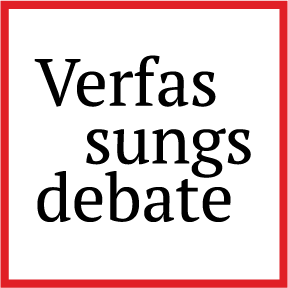Remembering Democracy
How Belarusian “Artivists” Reclaim the past to Forge a Future
In the years following the brutal suppression of pro-democracy protests in Belarus in 2020 and 2021, a wave of politically engaged Belarusian artists – visual artists, musicians, filmmakers, poets and novelists – have been driven into exile. Many have been branded as “extremists” by the regime and would face imprisonment if they were to return to Belarus, joining the numerous political activists already in detention. Now scattered abroad, these artists not only use their work to reflect on the repression at home, but also often seek new ways to keep the spirit of resistance alive.
Examining the “artivist” efforts that have emerged in exile offers interesting insights. It shows how memories of Belarus’s recent and distant past, including the protests themselves, are being mobilized to lay the groundwork for a democratic future in Belarus, even if democracy is currently not a tangible possibility. Through some artistic examples, this article explores how such work intervenes in the field of memory politics and considers its significance for pro-democracy activism in Eastern Europe.
Some examples of Belarusian exile art
One example is Dresses for Freedom by the Prague-based Belarusian-Cuban artist Anna Karan, a visual work commemorating the Belarusian women who marched against the regime back in the summer of 2020. Karan collected dresses worn during those protests and covered them with layers of paint – mostly red and white. Now displayed, the clothes have been transformed from everyday objects into something more enduring and monumental.
This work has gained increased resonance by being featured in a recent exhibition at the Mission of Democratic Belarus in Brussels, a cultural initiative founded by exiled Belarusian democratic forces to advance awareness of the plight of pro-democracy activism and politics. By virtue of being showcased so near to key EU institutions in Brussels, politically engaged Belarusian art may have the ability to rally international support against the current regime. It also highlights the broader geopolitical stakes at play.
A similar story can be told about the work of visual artist-turned-artivist Darya Siamchuk – known as Cemra, a pseudonym that translates to “darkness” in Belarusian. Her project Lazaret showcases canvases and ceramic objects that bear the imprint of bloodstains and raw, wound-like abrasions. “A wound does not destroy the subject and does not kill,” she explains on her website, “it makes the subject alive: potentially more alive and self-aware than before.” The message is as personal as it is political: the depicted wounds are emblems of both damage and resilience. Failure is not necessarily the end, the artist seems to be saying; it can be a form of preparation for what’s to come.
The reds and whites in this work symbolize wounds and bandages but also echo the white-red-white flag. Individual wounds become inscriptions on the symbolic body of a nation in exile. And like Karan’s Dresses for Freedom, Cemra’s Lazaret has been exhibited at a venue rich in political meaning: the Museum of Free Belarus, an institution founded in Warsaw in July 2022. Poland is the largest haven for Belarusian exiles, and the country’s pre-1989 history of the anti-communist mobilization resonates well with those struggling for democracy now.
Almost five years after the 2020 elections, when the prospects for democracy in Belarus appear bleak, art exhibitions like these can help to keep fragile hopes alive. They form part of what Heinrich Kirschbaum has called a “revolution of patience” – a sustained struggle for democracy that persists through memory and creative expression and stubbornly refuses to let the cause fade from the political agenda.
Red, white, and the art of invoking the past
One way in which such art intervenes in the field of memory politics is through its reliance on the ‘national colors’ of Belarus: red and white. This visual representation functions as a shortcut to tell a specific historical narrative about the Belarusian nation, one that supports a struggle for democratic freedom and competes with the official state narrative.
The crux is this: instead of using the colors of the current official flag of the country – the red-green two-colour flag that is an adaptation of the one used during the Soviet era – these artivists have presented, invoked and worked with the white-red-white emblem, which refers to another past: that of the Belarusian People’s Republic of 1918. The white-red-white flag was also the country’s official flag for the brief period between the fall of the Soviet Union in 1991 and Lukašenka’s referendum in 1995, after which a variant of the Soviet-Belarusian flag and coat of arms was introduced. The use of the white-red-white flag (not only in visual art, but also on book covers and by putting it on display at musical performances) incorporates important but officially denied legacies into a new culture of national remembrance, one that revalues the political power of exile activism and seeks to confront the dominant historiography of the Soviet Union in Belarus.
The establishment of such a new culture of memory, with new symbols of national representation, functions as a form of democratic emancipation. The aim of this “artistic memory work” is thus not only to expose the falsehoods behind the state’s historical propaganda and the regime’s problematic practice of linking civic duty with patriotic adherence to state-mandated history; it also actively foregrounds a new (but also historically rooted) repertoire of images and symbols, songs and sounds, memorials and monuments. In doing so, the artivists hope to stimulate interest in a broader and more honest exploration of the country’s history and liberate that history from the regime’s national narrative. They also seek to celebrate the role of protesting citizens and exiled communities as an inherent part of the Belarusian national narrative.
New memories versus the solidification of the regime’s authority
Such memory interventions are essential to counter the hyper-memorialization that is already in place in Belarus and keeps driving Belarusian nation-building under Lukašenka. Lukašenka’s regime has weaponized historical memory precisely to entrench its authority. Since 2020, the regime’s tactics on this front have only intensified, with the state now fostering a culture of patriotic memory through campaigns, monuments and museums.
Lukašenka’s strategy has centered on aligning the official national narrative with a selective glorification of Soviet history, particularly the legacy of World War II (known as the Great Patriotic War). This narrative champions state power, Russian cultural ties, and Soviet heroism while distancing Belarus from democratic values and European historical perspectives. In essence, the regime portrays Belarusian history as a mere extension of Soviet history.
The old but in recent years revamped Museum of the Great Patriotic War in Minsk is a spectacular example of this. It has been transformed into a symbol of national identity that glorifies the Soviet role in the war. Parades and public rituals associated with the war reinforce the image of Belarus as a perennial victim of Western aggression. Stalinist purges and other Soviet oppressions endured by Belarusians, on the other hand, are downplayed or ignored, erasing Belarus’s own struggles for independence and democracy. An example of the latter is the regime’s dismissive stance on the Kurapaty massacres. These massacres took place near Minsk between 1937 and 1941, when thousands of Belarusians who were regarded as “enemies of the people” (intellectuals, political opponents, minority groups) were executed by Stalin’s NKVD secret police. In recent years, attempts to hold spontaneous commemorations and protests in Kurapaty have been met with state harassment or arrests. The government has also removed makeshift memorials erected by activists and allowed the construction of commercial facilities nearby, which many see as a deliberate degradation of the site’s memorial significance.
Even though Lukašenka’s hyper-memorialization strategies are often aimed at making people forget certain parts of the past, they still take the form of “memory campaigns”. In 2022, for example, the “Year of Historical Memory” was proclaimed, a project aimed to instill an “objective” view of Belarus’s past. The campaign began with an unusual public lesson on “historic memory” taught by Lukašenka himself and was then continued by a series of exhibitions, conferences, and educational programs, all meant to counter what Lukašenka’s administration saw as hostile efforts by others to “rewrite history”.
Laws have also intensified control over memory. Since January 2021, the white-red-white flag is classified as extremist, making its display punishable. Legislating memory has also happened on the level of the constitution, as has been explained here. The 2022 referendum, held amid Russian troop movements through Belarus, added provisions to consolidate the regime’s authority over historical interpretation. Article 15, for example, mandates the state to “ensure the preservation of historical truth and memory of the heroic feat of the Belarusian people during the Great Patriotic War.”
Finally, the regime’s historical narrative has been reinforced through a foreign policy that aligns Belarusian memory with Russian geopolitical interests. Russian dominance has become normalized in Belarus, as is exemplified by the government’s military support to Russia in the war Ukraine and Belarus’s official recognition in November 2021 of the Russian annexation of Crimea.
Complications, challenges, and hope against hope
Exiled Belarusian activists and artists have sought to expose the political misuse of nationalist symbols by undemocratic forces while striving to construct new symbols of national unity and resistance from the ground up, drawing on alternative historical legacies. Yet, their efforts often face challenges not only from the regime but also from some observers abroad who reframe or misrepresent these symbols as a form of political nostalgia that propagates primordialist, romantic or even exclusionary notions of Belarusian nationhood.
In Lithuania, for instance, some politicians have voiced concerns that Belarusian exiles might harbor revisionist nationalist views – and thus, implicitly, territorial claims – based on a somewhat obscure interpretation of the Grand Duchy of Lithuania’s history (an interpretation which considers Belarusians as the inheritors of that political entity). Although such revisionist sentiments, let alone territorial claims, find little support among Belarusians in Belarus or abroad, fears have occasionally surfaced in Lithuanian politics; and they have engendered caution among citizens and heightened Lithuanian suspicions of Belarusian exiles. Activists who seek to mobilize national memory through the white-red-white flag in their art must navigate this terrain with care to avoid being undermined by such politicizations.
Another challenge is that, despite some success in raising international awareness, the struggle for Belarusian democracy has largely receded from global attention and is now rarely making headlines. Most international news about Belarus is now filtered through the lens of the war in Ukraine, which has moreover reshaped perceptions of Belarus itself. The international view of Belarus has narrowed: the country’s internal struggle for democracy has been overshadowed by its role as an enabler of Russian aggression. The situation has not been made easier by the fact that Belarus has been subject to a ‘creeping annexation’ by Russia. This development obscures the kind of Belarusian identity that exiled and imprisoned Belarusian pro-democracy activists have tried to construct.
Despite these challenges, many Belarusians in exile remain remarkably resilient and determined. If there is reason for hope, it must be this: there have been cases in the past where the struggle against authoritarianism initially failed, only to lead to a sudden change at a later stage. In 1968, for example, the Prague Spring in Czechoslovakia was crushed by Soviet forces, and the ensuing period of ‘normalisation’ reasserted state control and extinguished the hopes of a generation for reform. But the memory of that uprising persisted, living on in art, literature and underground circles until the Velvet Revolution of 1989 brought down the regime.
One can only wonder how long it will be before another Velvet Revolution unfolds in Eastern Europe. In the meantime, Belarusian artivists continue to preserve the memory of the near-revolution of 2020, writing down its history, cherishing its symbols, and ensuring it is remembered. Only by keeping this memory alive can it one day serve as the foundation for another attempt to make it happen.



